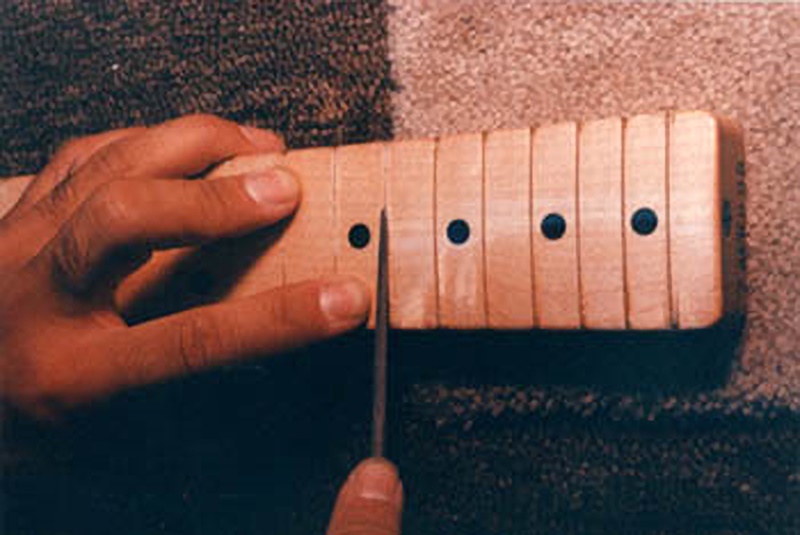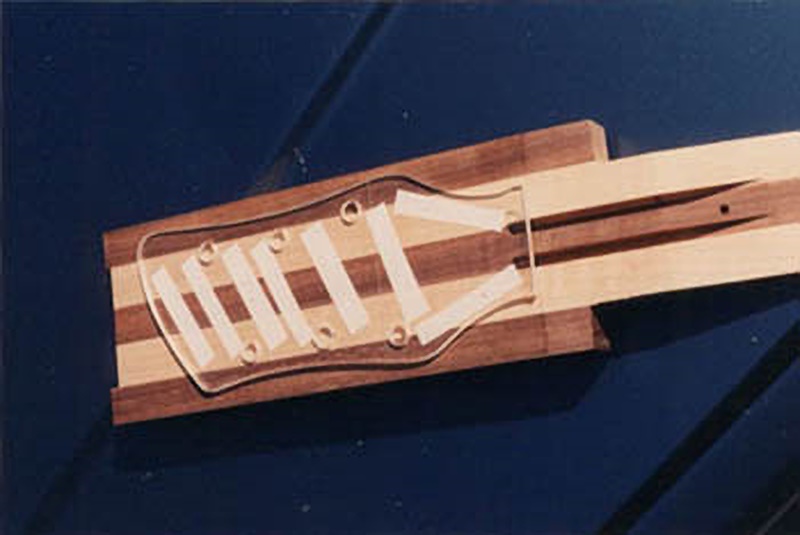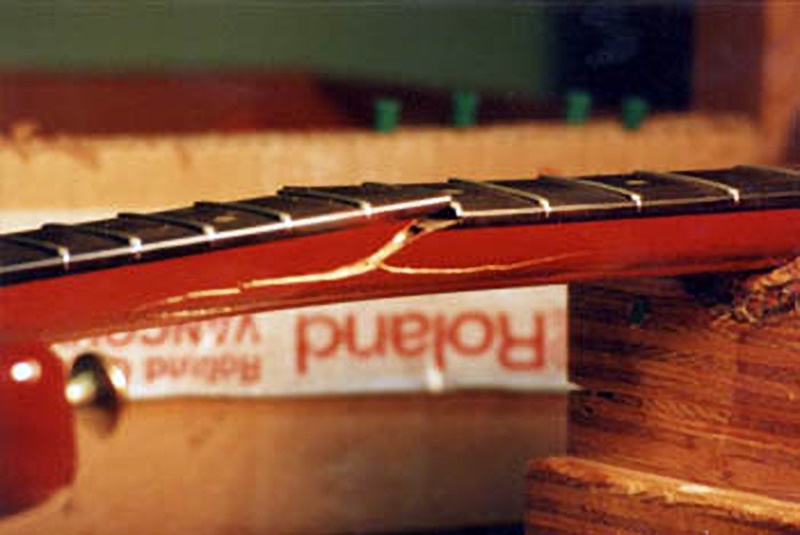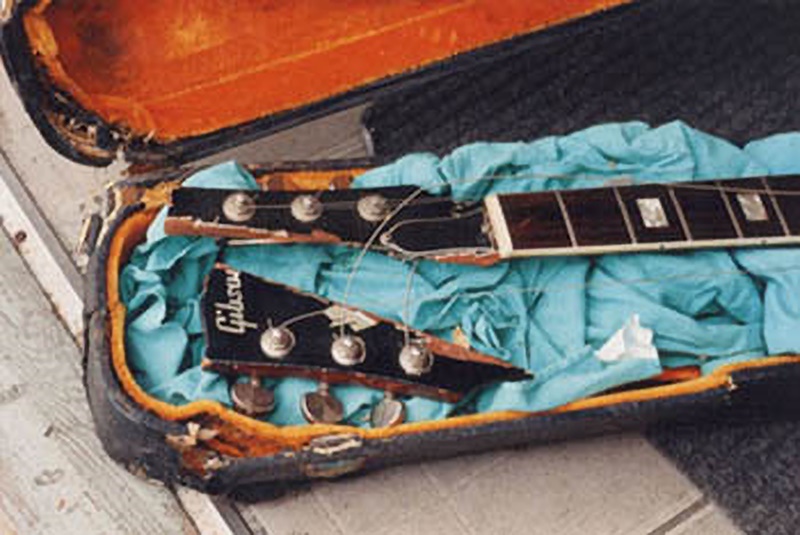The Fender applies finish after the frets are installed on a maple neck. Especially on the 1970s maple neck, the polyurethane finish is so thick that half of the fret height is buried in the finish. That's why, in the case of frets that are worn or dressed, it is hard to play because the...
This repair involved the creation of a completely new five-piece headstock. This broken five-piece guitar neck had been repaired previously with fiberglass, which was a very popular technique in the 1970s, and it was painted very dark to cover it. I don't know why, but the crack itself was not glued. The owner used this...
Any repair must be done properly the first time, otherwise, it could cost you more in the end than you expect. Besides, a repair will be much more difficult if it is first fixed poorly, like in this case. Repair specifications: - Make a new heel and install the neck so the repair is not...
Using brass parts was a 1970s fashion. Usually, a neck break occurs where the neck meets the head. This type of neck break, pictured here, is very rare. The mahogany of the neck was fractured, the ebony fretboard was broken, and the truss rod was bent --- a first-class neck break. When you repair a...
It was supposed to be a nice vacation, but it was ruined by a careless cargo worker at the airport. Luckily, the guitar was insured, but the owner's precious guitar will never be the same. He asked the manufacturer, Gibson, to make a new neck, but they estimated an unbelievable price and a long wait...




